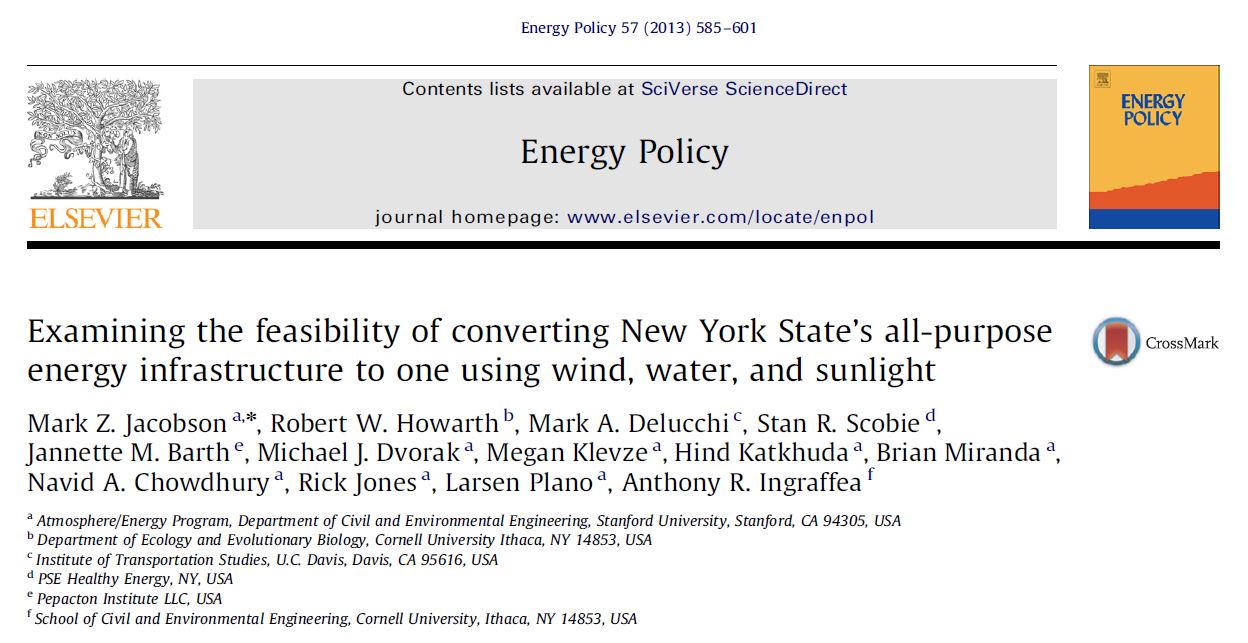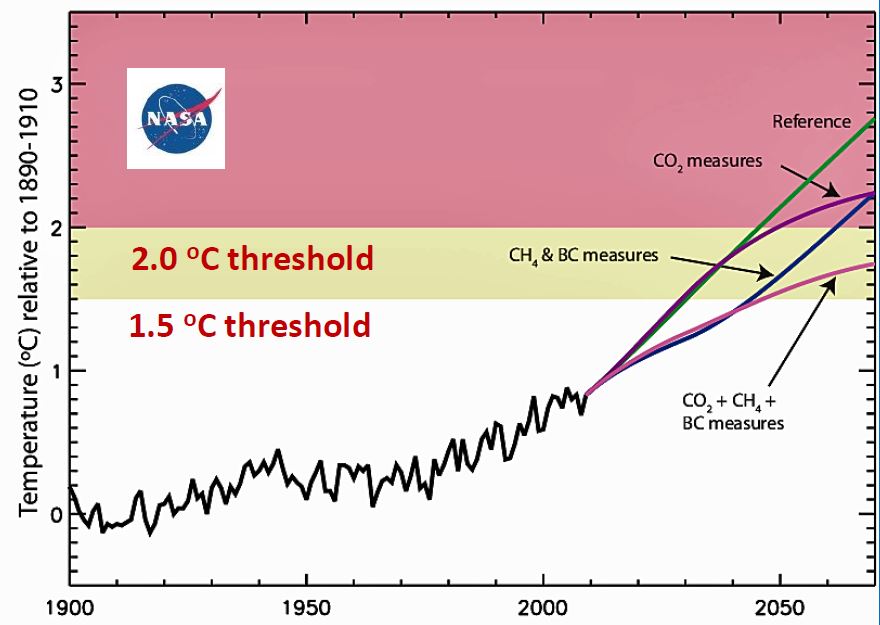The 2030 Plan
for a fossil-fuel free New York
(Download the summary as a printable pdf)

In March 2013, a team of scientists and engineers from Stanford, Cornell, and other institutions published a peer-reviewed study calling for an aggressive transition to make New York State completely free of fossil fuels. All energy for electricity generation, transportation, heating, and industry, would come from the wind, water, and sun.
The plan uses only presently available technologies already in commercial use. This cost-effective plan saves lives, reduces global warming, and increases the energy security and competiveness of New York.

Why the plan? Urgent need to slow global warming, and to reduce illness and death from fossil-fuel driven pollution. The plan offers New York an alternative to shale gas, with far greater benefits and fewer risks.

Source: Drew Shindell and others (2012). Simultaneously mitigating nearterm climate change and improving human health and food security. Science 335: 183-189.
The Earth has already warmed by 0.7 degree C, and is on track to warm to 1.5 degrees within 17 years and 2.0 degrees within 20 years. Such temperatures pose serious risk of spiraling feedbacks, leading to further uncontrollable warming. To avoid this requires huge reductions in both carbon dioxide and methane emissions. Over the coming few decades, controlling methane is essential. Yet natural gas is the largest source of methane pollution in the US, and shale gas only aggravates this. We simply must end our addiction to fossil fuels, including coal, oil, and natural gas.
Fossil-fuel driven air pollution causes widespread illness, lost time from work and school, and 4,000 deaths each year in New York State. This illness and death costs the residents and taxpayers of New York $33 BILLION every year.
The Plan:
- Calls for use of electric vehicles, and high-efficiency electric heat pumps for commercial and domestic heating (resulting in 37% less total energy use, simply due to greater efficiencies of these modern technologies).
- Uses the most environmentally benign generation technologies for electricity (as one example, the plan details the costs and benefits of using 40% offshore wind, 10% onshore wind, 28% photovoltaic, 10% concentrated solar, and 12% geothermal, hydro, tidal, and waves).
- Relies only on technologies that are commercially available today.
- Uses a variety of energy storage techniques and approaches for balancing demand to production (hydrogen generation, flywheels, compressed air, pumped hydroelectric, batteries, and seasonal heat storage through geothermal storage all play a role).
- Is cost effective (the $570 billion price tag over 20 years is less than the health-care savings from reduced air pollution).
- Leads to greater energy security, and more stable energy pricing into the future.
- Creates far more jobs than does the continued reliance on fossil fuels.
- Is only a start. The creative minds of New Yorkers can build on it, and make it even better. Yet even in this beginning stage, the plan is so much better than the continued use of coal, oil, and natural gas.
The full paper behind the plan is available on line at this link.
Some commonly asked questions:
How long will the transition take? The plan calls for all new electricity generation to come from wind, water, and sun by 2020, leading to 80-85% conversion by 2030 and all fossil-fuel use fully phased out by 2050.
Is there any precedent for such a rapid technological transition? Yes, many. For example, cars replaced horse-drawn carriages as the major means of transportation in the US in just 10 to 20 years between 1910 and 1930.
Are the necessary technologies available now? Yes, the plan relies only on presently available technologies already in commercial use. Engineers have made amazing progress over the past decade, and with support and investment will continue to do so. The time is ripe for moving quickly to renewables.
Won’t the transition be expensive? No, many forms of renewable energy are already cost effective compared to fossil fuels (even without considering the external costs to health and global warming), and will only become more so in the future.
What happens when the winds are calm, or at night? The plan calls for storing energy in a variety of ways, and for connecting wind turbines across a large area. (with diverse wind patterns). There is no need for base-load production from coal.
Can’t shale gas serve as a bridge fuel, until renewables can be fully deployed? Shale gas is disastrous in terms of global warming, competes with renewables in terms of scarce capital for energy investment, requires large-scale industrialization of the landscape, and simply is not needed.
Does the plan call for nuclear energy? No. Unsolved issues of waste disposal and other dangerous risks make nuclear an unacceptable option, and renewable energy is less expensive.
Don’t wind turbines kill birds? Pollution from coal and natural gas kill more than 10 times as many birds as wind turbines, per kilowatt of electricity produced.
The 2030 plan: The time is NOW!